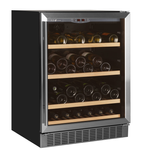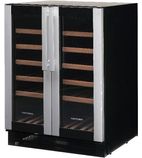Wine Coolers
Specialist wine coolers are the perfect stocking option to maximise wine bottle storage capacity and keep your wines under optimum conditions, being specifically designed to maintain the perfect environment for wine storage. Many models have dual temperature controls for different types of wine, and storage in a wine cabinet can help to age fine wines as well. Storage capacities range from 11 to 196 bottles, so you'll easily find a wine cooler of the right dimensions and storage for your business.
![]() * Items marked with the 'Order Today Delivered Tomorrow' graphic qualify for Next Day Delivery only if the item is ordered before the Next Day Delivery cut off time shown on the product page. Some Next Day Delivery services are chargeable.
* Items marked with the 'Order Today Delivered Tomorrow' graphic qualify for Next Day Delivery only if the item is ordered before the Next Day Delivery cut off time shown on the product page. Some Next Day Delivery services are chargeable.


